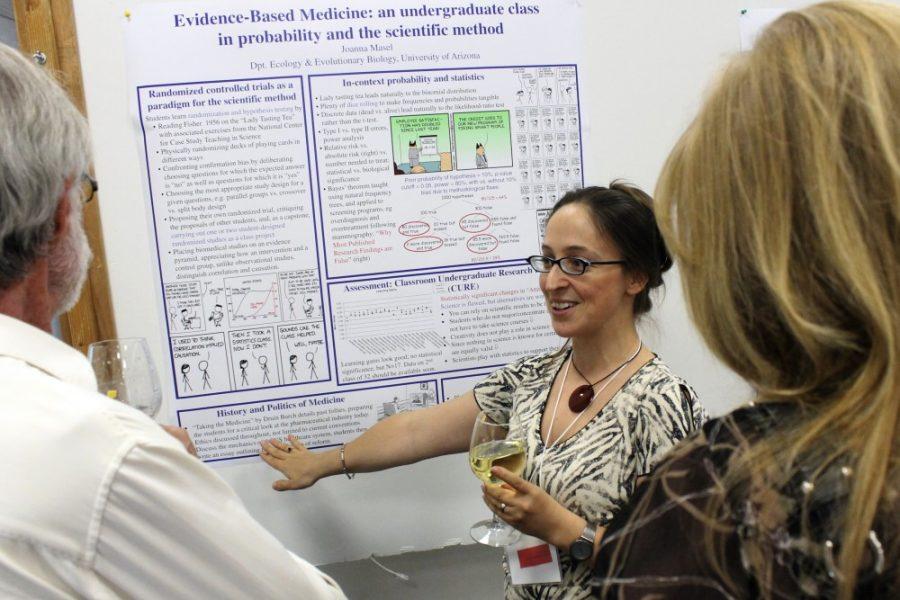Professors and researchers from educational institutions across the globe met at the Thomas W. Keating BioResearch building for the “Making BioMath Happen” conference last week.
The two-and-a-half-day conference brought together professors of biology, mathematics and interdisciplinary studies to discuss the current curricula for students in the fields, and how to overcome their challenges.
Biologists and mathematicians work within incredibly different subject matter, but as their fields begin to grow and rely on each other for information, a certain level of understanding is needed, according to Joe Watkins, a UA mathematics professor.
During the 11th century, professors from Oxford and Cambridge taught mathematics in a particular way with the use of slate tablets, Watkins said. When biology was first established and taught, it was either observation in a field in terms of natural history or test tube experiments. As these fields of study became reliant on each other, the institutional way of mastering the subjects needed to be discussed, Watkins added.
“The lectures you see in the mathematics classes take time in an experimental setup in a biology class,” he said. “If you’re interested in how they come together, then the institution has to rethink the way it educates youth to do that.”
Some programs at educational institutions have a hard time finding the money or collaborators for making the necessary changes in their field. The conference’s keynote speaker, Bill Velez, associate head of Undergraduate Programs and Department of Mathematics at the UA, said he faced a similar challenge.
In the 2003-2004 school year, the number of math majors at the UA was around 307. Velez said he was able to nearly double that amount, bringing it up to 605 in the 2011–2012 academic year.
“I don’t believe much in outreach because it’s too expense for faculty,” Velez said. “I think we should emphasize on ‘in-reach.’ We have thousands of students that take our classes each year. Why don’t we reach out to the students in our classroom? Let them know the implication of taking more mathematics. The more mathematics a student takes, the more opportunities there are for that student.”
Educators such as Jose Quintans, the dean and master the of Biological Sciences Collegiate Division at the University of Chicago, and Linda Grisham, Director of the Center for Teaching and Learning at Massachusetts Bay Community College, gave small lectures, while other established professors in paneled groups discussed the special challenges for undergraduate education at institutions of various sizes and how bringing new perspectives to the math and biology interface could help.
Louis J. Gross, professor of Ecology, Evolutionary Biology and Mathematics at the University of Tennessee at Knoxville, and director for the National Institute for Mathematical and Biological Synthesis, mentioned a challenge that he had dealt with first-hand, which involved teaching the subject to people who had a limited comprehension of the concept.
“The bane of mathematics education in the U.S. is people who control it — the people like me, for whom mathematics came easy — and so it’s very difficult to put yourself in the mode of the student who doesn’t really know what X and Y mean,” Gross said.
Bill Boecklen at New Mexico State University helped develop a new class for the next school year, Introduction to Mathematical Biology, in the hope to strengthen the quantitative side of biology.
“The success is that it really has opened up communication between biology and math,” Boecklen said. “Both departments are invested in this program.”









